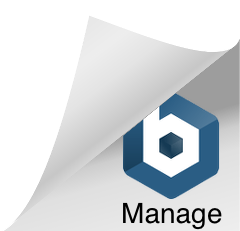What affects happiness in the workplace? What are the ways to sustain happiness at work? Is happiness replacing other personal goals such as work promotions as the new level to strive for? These, among others, are questions I have been grappling with recently.
Steph Sharma’s blog post on eudaimonic well-being argued that long lasting happiness comes from having a purpose in life. Living life with intention, communicating and staying devoted to one’s purpose is key to maintaining eudaimonic well-being. A Lead The Difference study on purpose also supports that connecting one’s individual sense of purpose to work is integral to how much one enjoys the work they do. Sounds easy in theory, but realistically how many working individuals are able to maintain long lasting happiness in the workplace amidst society’s current structural forces?
Happiness Steps
Srikumar Rao, author of Happiness at Work, claims, “The biggest obstacle to happiness is simply your belief that you’re the prisoner of circumstance, powerless before the things that happen to you.” In his book, Rao describes 10 Steps to achieving Happiness at Work. There are two steps I found most poignant to the struggles facing my generation, the Millennial generation, in the workplace.
The first step is practicing extreme resilience. This is essentially the ability to quickly bounce back from adversity, de-clutter your mind and make room for creativity and innovation. I’ve experienced this many times at my first internship, often I felt derailed from critical reviews and only felt disappointed and negative rather than thinking of creative solutions. Looking back, I realize how easily small tribulations swayed me away from progress and my intention at work. I believe this happens to many working individuals, regardless of age, and that it inhibits many of us in the way we think, perceive and act in our role at work and life.
The second notable tip is about finding passion within you personally, not just the job. Rao suggests that instead of aiming for the perfect position at work, one should reinvent the way they think about their position. Perception is not reality, but it sure does dictate inner emotions, thought processes and actions. For example, many recent college graduates starting their first job assign a negative connotation to their title. I’ve noticed this through conversations with friends about how they describe their job. Common statements are, “it’s just a coordinator position” or “it’s not the one I wanted, but it’s better than nothing.” This is almost like a verbal indicator of demotion to the self in the work environment.
I know from my research internships that being proud of what you do makes work ten times more enjoyable. This is true primarily because I appreciate the worth of the work I do. I believe the point Rao is trying to make is that the trick is to find the impact of your work, who you are helping and how you’re role is essential to your co-worker’s success and happiness and ultimately connect it to your own individual purpose.
The Millennial Way
The impact recognition of one’s work is something that my generation is keen on incorporating into their work life. A recent article in Forbes by Lisa Curtis supports this when she points out how the Millennial generation is changing they way we measure success. Instead of measuring success in terms of money, titles and promotions, we measure it in happiness. Curtis believes that the Millennial generation is making a “transition from climbing the ladder of unfulfilling societal expectations and consumerism to blazing a trail with a life guided by a holistic focus on well-being, community and sustainability.”
It seems to me now that with changing societal expectations and perspectives, eudaimonic well-being is not only realistic but also becoming a new motto for the Millennial generation. Curtis further notes that the Millennial generation is seeking a work life balance based on happiness rather than a traditional measure of success. This made me realize just how much this new “norm” is followed and promoted via various social networks and platforms.
Twitter, Facebook, Instagram and Pinterest are among the top used social media sites today. More and more I find friends sharing updates, pictures and articles based around the notion of happiness, inspiration and creativity. Instead of a battle for who has the biggest salary, it appears as if we are trying to self promote and sometimes brag to each other about our scale of happiness.
This might not be the case for every working individual today, but I firmly believe that there is a shift in the way society is thinking about employment and happiness that could help more working individuals attain and sustain eduaimonic well-being. It will of course depend on a combination of factors including the organization, work relationships, individual self-purpose and the energy within each component of the individual.


